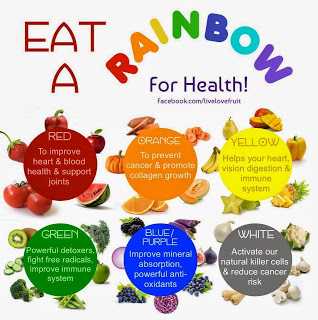Found here.
For those of you who are still in school, great! For those of you, like mahself, who are so far past the days of lockers and classes, get your notebooks at the ready. We are going back to chemistry class. As soon as you start to develop your understanding of cellular nutrition and the scientific reasoning as to what separates healthy foods from the ‘junk’ at a molecular level, you will start to appreciate food and its potential in a completely different and deeper manner.
pH 101
I’m sure you’ve seen this little symbol pop up in textbooks, on talk back shows, in nutrition books and so on, but do any of you actually know what this baby means? pH actually stands for potentiated hydrogren and refers to the amount of oxygen present in any given substance. The pH scale ranges from 0 to 14 with 0 to 7 reflecting a more acidic composition and 7 to 14 reflecting the substances alkaline nature. Our bodies strive to maintain a blood pH of about 7.56 in its homeostatic state (are the human biol recall bells ringin’ now?). But it should be noted that our bodies are more easily ‘acidified’ (and yes, that’s a made up word) than they are alkalised. Every day exposures to stress, smoke, pollutants, chemicals and other industrial nasties send our acidity levels right off. A number of studies have looked into the affects of an ‘acidic’ blood environment to a person’s overall health and guess what they found? Cancer, diabetes, heart disease, skin problems, weight troubles and even mood disorders thrive in an acidic environment. And it isn’t just external stresses and pollutants that can acidify our bodies; alcohol, white flour, sugar and artificial sweeteners are amongst the most acidic substances that we can consume. So how do we combat this and steer our blood back to its optimal level? Dose up on your alkaline foods! Get them in you at every opportunity. Natural beauty expert Kimberly Snyder talks about the benefit of commencing your meal with an alkaline food, which is a huge benefit when it comes to eating out or enjoying ‘treat meals’ that you have less power over their choice of ingredients. Start every meal with an alkaline food and this will boost digestion, aid satiety and lead to a happy and healthy tummy. Choose foods that boast a high pH and alkaline rating such as lemons, pineapple, sweet potato and kale, and add them into your daily bounty of colours and textures!
If in doubt … Eat the Rainbow.
Found here.
Let me know what you thought of this introduction to food science post! Did you learn something new? Spark up an interest in pursuing your learning further? Holla at me and leave a comment below or via the BTM facebook page!
Blessings, periodic tables and crazy coloured dishes of deliciousness x


Leave a Reply